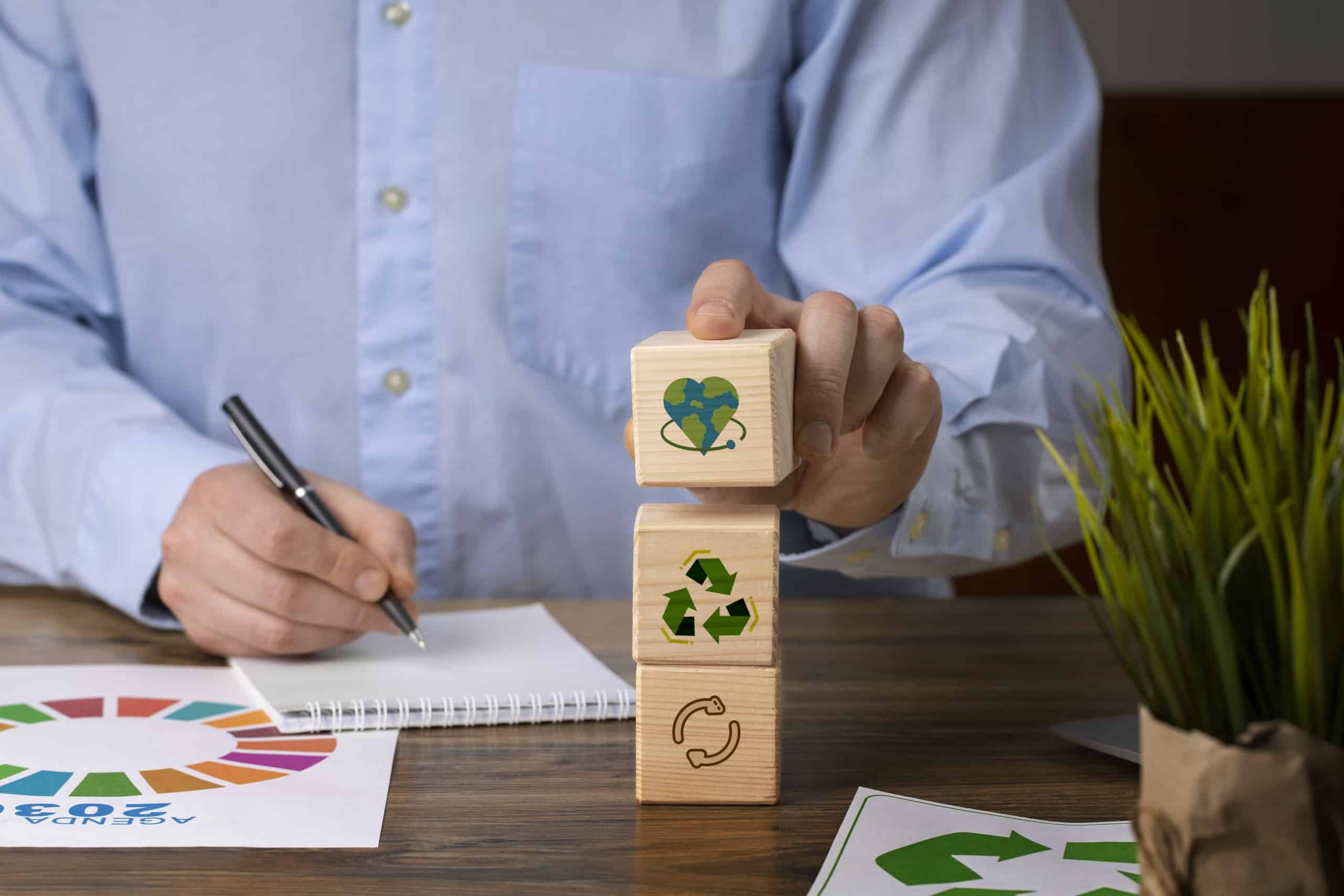The Growing Need for Water Conservation in Manufacturing
Water conservation has become an increasingly important problem in the industrial sector, as worldwide water scarcity deepens and the need for sustainable practices develops. All industries are under pressure to cut down on water use and adopt more environmentally friendly operational procedures. Manufacturing operations have a big environmental impact since they often use a lot of water. Because of this, it is imperative that manufacturers use water-efficient technologies and procedures that cut down on waste, recycle materials, and lessen the impact on natural water sources.
The necessity for conservation increases in areas that are very short on water. Wet wipes manufacturers are under pressure to come up with creative solutions as governments and environmental groups impose more stringent restrictions to control water use. Businesses that practice water conservation not only comply with regulations but also lower production costs related to the acquisition, treatment, and disposal of water. Water-saving solutions are becoming a more appealing alternative for firms looking to increase sustainability while maintaining continuous operations due to their long-term savings and advantages.
Apart from the economic and legal aspects, there is a growing awareness among customers about the environmental consequences of the items they use. Businesses that actively promote eco-friendly practices and preserve water might have a competitive advantage in the market. Wet wipes manufacturers may support global sustainability initiatives, maintain their image as ethical companies, and win over an increasing number of environmentally sensitive customers by emphasizing water conservation. Water conservation in manufacturing is becoming a requirement rather than an option for long-term economic performance and environmental preservation as the need for sustainable production rises.
Water-Saving Technologies in Wet Wipes Machines
Water-saving features in wet wipes machines have become essential as wet wipes manufacturers look for ways to minimize their environmental effect without sacrificing performance. Significant volumes of water are often needed for many steps in the creation of modern wet wipes, such as fiber treatment, material saturation, and cleaning procedures. But because to the development of cutting-edge water-saving technology, wet wipes manufacturers may now drastically reduce water usage without sacrificing the quality of their output. Water recycling systems, precise dosing devices, and high-efficiency nozzles that maximize water utilization throughout manufacturing are some examples of these technologies.
The use of sophisticated filtering systems that reuse water used in manufacturing is one of the most significant improvements. The water may be utilized again after being treated and purified by these methods. These filtering systems assist firms in conserving large volumes of water, cutting down on operating expenses, and lessening their environmental impact by decreasing the need for fresh water input. This is particularly helpful in areas where there is a risk of water shortages or expensive water bills.
Precision dosing systems, which guarantee that just the necessary quantity of water or solution is supplied to each wipe during manufacturing, are another essential piece of technology. Conventional techniques can result in excessive water use and waste. On the other hand, precise dosing systems may be adjusted to provide precisely the right quantity of moisture, guaranteeing effective resource use. Because each wipe gets the same amount of saturation, this not only uses less water but also produces items that are of greater quality.
Water utilization in wet wipes machines has been revolutionized by the introduction of high-efficiency nozzles and spray systems, in addition to recycling and precise dosing. With less liquid used, these nozzles are designed to disperse water or solutions uniformly. The spraying mechanism may be optimized by manufacturers to guarantee that every wipe is adequately soaked with the least amount of water wasted. This method increases production efficiency, lowers energy consumption throughout the drying process, and promotes resource conservation overall.
The manufacturing of wet wipes has also changed how water is managed with the introduction of closed-loop water systems. These systems reduce effluent and the demand for external water inputs by continually cycling water through the wet wipes manufacturing line. By reducing the environmental impact of processing and discarding wastewater, this closed-loop method not only conserves water but also aligns the production of wet wipes with contemporary sustainability objectives.
The sustainable wet wipes manufacturing of the future is embodied in these water-saving technology. Wet wipes manufacturers may minimize production costs, lessen their dependency on natural water supplies, and enhance their overall environmental effect by incorporating these systems into their machinery. As worldwide demand for eco-friendly practices develops, water-saving solutions in wet wipes machines will continue to play a crucial role in determining the industry’s future.
The Impact of Water-Saving Technology on Environmental Protection
The influence of water-saving technologies on environmental preservation is considerable, particularly in sectors like wet wipes manufacture, where enormous quantities of water are routinely utilized. Wet wipes manufacturers may drastically lessen their dependency on freshwater resources by using cutting-edge water-saving technology, which is essential in a world where water scarcity is becoming an increasingly urgent worldwide problem. Since water is a limited resource, protecting it via technical innovation is essential to preserving the long-term viability of ecosystems and populations that depend on it.
Water-saving technology has many direct environmental advantages, one of which is a decrease in the amount of water extracted from natural sources, including lakes, aquifers, and rivers. Degradation of ecosystems, loss of biodiversity, and habitat destruction may result from over-extraction of water from various sources. Businesses may contribute to the preservation of healthy ecosystems and the protection of aquatic life by minimizing the quantity of water used in the manufacturing process. Water conservation may help lessen the load on already-stressed water systems, which is especially critical in areas experiencing droughts or ongoing water shortages.
Water-saving technology also lessens the energy load on wastewater treatment and water treatment facilities. Large volumes of wastewater are produced during the traditional production of wet wipes, and before they can be properly released back into the environment, they must undergo energy-intensive treatment procedures. Wet wipes manufacturers may reduce wastewater production by using technology such as closed-loop water recycling and sophisticated filtering systems. This contributes to less greenhouse gas emissions and a more sustainable production model by lowering the environmental effect of wastewater treatment as well as the energy needed for these procedures.
Adoption of water-saving technologies also advances more general environmental objectives linked to climate change. Long-lasting droughts and altered rainfall patterns are two consequences of climate change that many areas with limited water resources are especially susceptible to. Wet wipes manufacturers contribute to the preservation of this essential resource by minimizing water consumption, increasing its availability to other industries, such as agriculture, and communities that could otherwise experience water shortages. This makes the economy more flexible and resilient, better able to deal with environmental issues.
Water-saving solutions not only save energy and water, but they also often result in a decrease in the use of dangerous chemicals, including those employed in conventional water treatment methods. As a result of fewer contaminants entering wastewater streams, rivers, lakes, and seas are cleaner and aquatic ecosystems are healthier. This is especially helpful for safeguarding endangered species and making sure the nearby people have access to clean water for farming, fishing, and drinking.
Lastly, wet wipes manufacturers that make investments in water-saving technology strengthen their standing as environmentally conscious organizations, which may result in improved interactions with partners, customers, and regulators. Customers are selecting firms that show a commitment to environmental protection as sustainability becomes a more important consideration in shopping choices. Wet wipes manufacturers that take the lead in implementing water-saving solutions benefit the environment and set themselves up for long-term success in a growingly environmentally concerned market.
In summary, the use of water-saving technologies in the manufacturing of wet wipes has a significant beneficial influence on environmental preservation. These technologies are a critical step toward more sustainable production, since they minimize chemical pollution, improve climate resilience, protect natural water supplies, and use less energy. The wet wipes sector may substantially lessen its environmental impact while also gaining improved brand recognition and operational efficiency by using these advances.
Enhancing Operational Efficiency with Water-Saving Solutions
Water-saving measures greatly improve operational efficiency in the production of wet wipes while also making a positive impact on the environment. Wet wipes manufacturers may increase overall productivity, save costs, and simplify their wet wipes manufacturing processes by optimizing resource utilization and minimizing water use. These solutions have observable positive economic effects, especially in sectors of the economy where water is a scarce resource and maintaining operational effectiveness is essential to being competitive.
Water-saving solutions increase operational efficiency in a direct manner by reducing water procurement and utility expenses. In the production of wet wipes, water is a major cost, particularly in areas with few or expensive water supplies. Through the integration of closed-loop water recycling technology and modern filtration systems, businesses may significantly decrease their reliance on external water sources. This reduces expenses while shielding wet wipes manufacturers from changes in water market prices, giving operational budgeting more consistency.
Furthermore, water-saving measures reduce the price of treating wastewater. The production of wet wipes using traditional methods produces a lot of wastewater that has to be treated before being disposed of, which may be costly and time-consuming. Businesses may lower the cost of water treatment facilities and the energy needed for these operations by producing less wastewater. Because of the large savings that result, wet wipes manufacturers are better able to direct their resources into new or innovative areas of production.
Water-saving technologies not only save money but also improve operational efficiency by extending the life of industrial equipment. Overuse of water may wear down machinery and accelerate its deterioration, necessitating more frequent repair or replacement. Wet wipes manufacturers may lessen the stress on their equipment by optimizing water flow and using precision dosing systems. This increases overall production productivity and efficiency by prolonging the life of manufacturing equipment and minimizing downtime for repairs or maintenance.
The capacity of water-saving technologies to maximize the use of other resources, including electricity, is another important feature. Numerous water-saving innovations, such closed-loop water systems and high-efficiency nozzles, are made to complement energy-efficient procedures. Lowering the amount of water used in manufacturing often results in lower energy demand for drying, heating, and cooling. Wet wipes manufacturers are able to maintain high production standards while cutting operating expenses because to this combined decrease in water and energy usage.
Adopting water-saving technology may also increase the quality and uniformity of the products produced, which will increase operational efficiency even more. By ensuring that every wet wipe gets precisely the right quantity of moisture for maximum effectiveness, precision dosing systems remove the possibility of either an over- or under-saturation. As a result, there are reduced manufacturing mistakes, material waste, and higher-quality goods. In addition to lowering the possibility of flaws or returns, consistent product quality also increases customer satisfaction and lowers quality control expenses.
Moreover, water-saving techniques might help increase production flexibility. Effective, water-saving solutions provide better adaptability to various production needs as wet wipes manufacturers strive to fulfill a broad variety of market expectations with their wet wipes products. For example, depending on the product being made, machines with sophisticated water management systems may instantly transition between various degrees of moisture saturation. This adaptability helps wet wipes manufacturers remain competitive by enhancing their capacity to react to consumer preferences and industry movements.
Last but not least, businesses that use water-saving technology often discover that these fixes have a good knock-on impact across their whole operation. Wet wipes manufacturers may find and fix additional inefficiencies in their operations by increasing efficiency in one area, like water consumption. This all-encompassing strategy for operational efficiency promotes innovation and long-term success by continuously improving the organization’s culture and making the most use of its resources.
In conclusion, by improving operational efficiency in a variety of ways, water-saving technologies provide wet wipes manufacturers with significant advantages. These technologies play a critical role in expediting production processes by lowering costs associated with water procurement, wastewater treatment, equipment lifetime extension, and product quality improvement. Wet wipes manufacturers may boost their bottom line, lower operational risk, and establish themselves as industry leaders in efficiency and sustainability by making investments in water-saving technologies.





